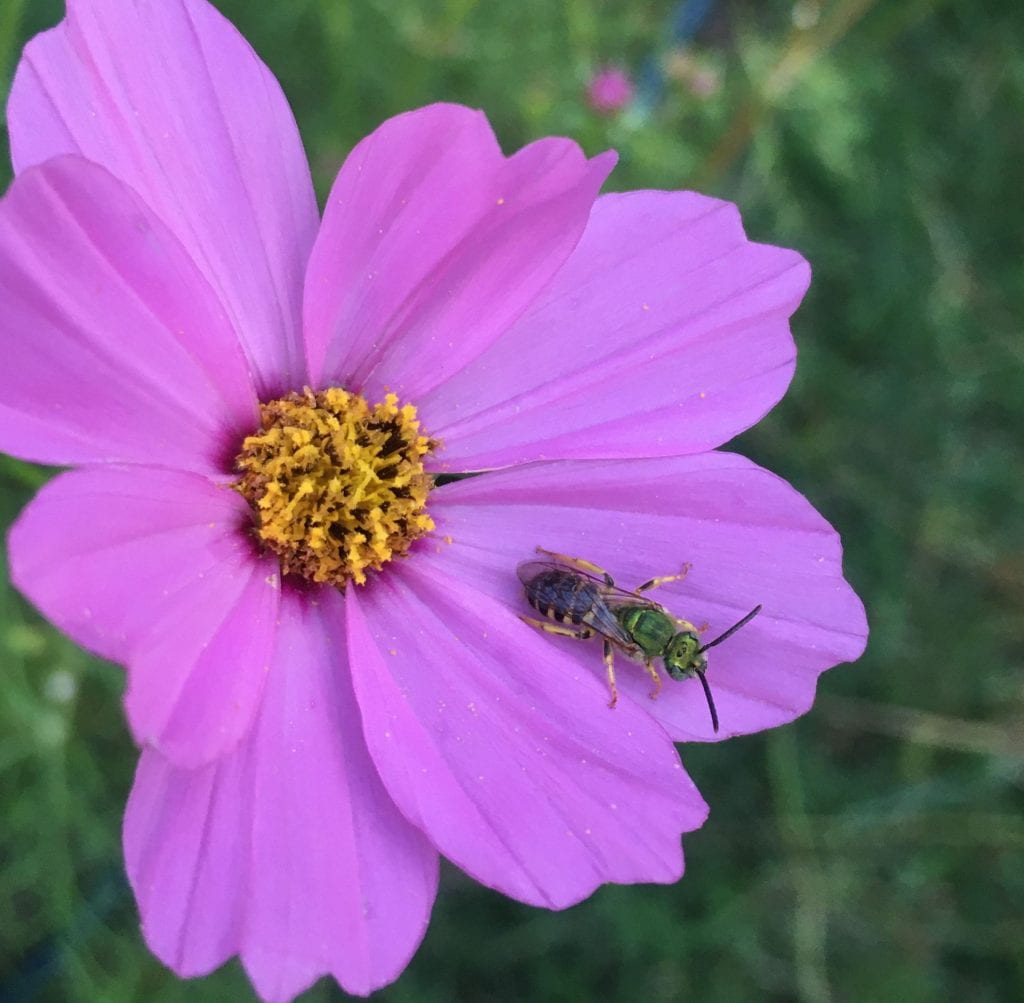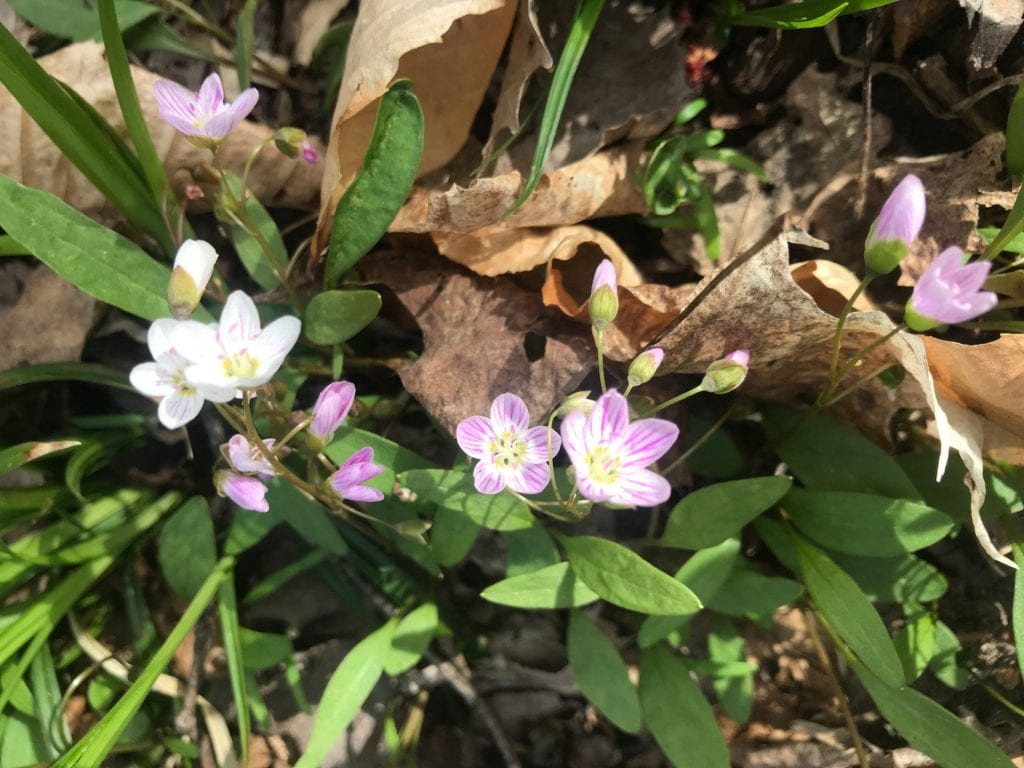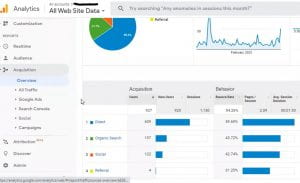The days are getting longer and (sometimes) warmer, trees are beginning to leaf out, spring bulbs are blooming, and lots of people are anxious to clean up their gardens. But you may have heard that cleaning up your garden too early is bad for pollinators and other beneficial insects like natural enemies of pests. Is this true? How long do you need to wait?

What’s the concern with early garden clean-up?
There are two aspects of garden clean-up that pose a risk to beneficial insects in your garden: cutting out dead stems and clearing away leaves or other debris on the ground. Some species of wild bees nest in dead stems, so cutting down and disposing of these stems before the bees emerge for the spring is problematic. Dead leaves and other plant debris on the ground provide shelter for natural enemies like lady beetles, fireflies, and ground beetles. Pristinely-raked garden beds remove this shelter. You can read more about the benefits of messiness in this ThinkIPM blog post.
When should I clean up my garden?
First, please don’t clean your garden up in the fall. With the exception of removing and disposing of diseased or insect-infested plants (especially annuals), let your garden rest in the fall.
Ok, so you’ve waited until spring. But when? It’s complicated. You are trying to protect a diverse group of wild bee species, who are nesting in diverse settings (including both the ground and dead plant stems), in addition to many different species of beetles, spiders, and other arthropod natural enemies of pests. It should come as no surprise that all of these different arthropods emerge from their winter homes at different times. For example, around here (NY) bumble bees, carpenter bees, mason bees, and mining bees emerge earlier (early April) than sweat bees (May). Even within two species of mason bee, researchers found that the temperature during the winter, the sex of the bees, and their size all significantly impacted when they would emerge in the spring (varying by up to 40 days). Winter temperatures also impact when alfalfa leaf cutting bees and other bees emerge.

Read more When can I clean up my garden…and still protect beneficial insects?



 I’m Jeremy Bloom (a.k.a. the Internet Farmer). Being a
I’m Jeremy Bloom (a.k.a. the Internet Farmer). Being a 